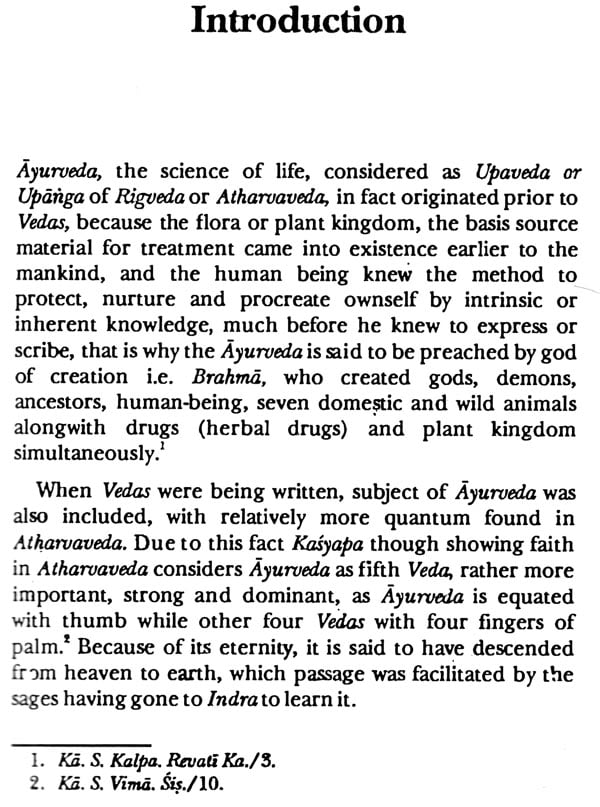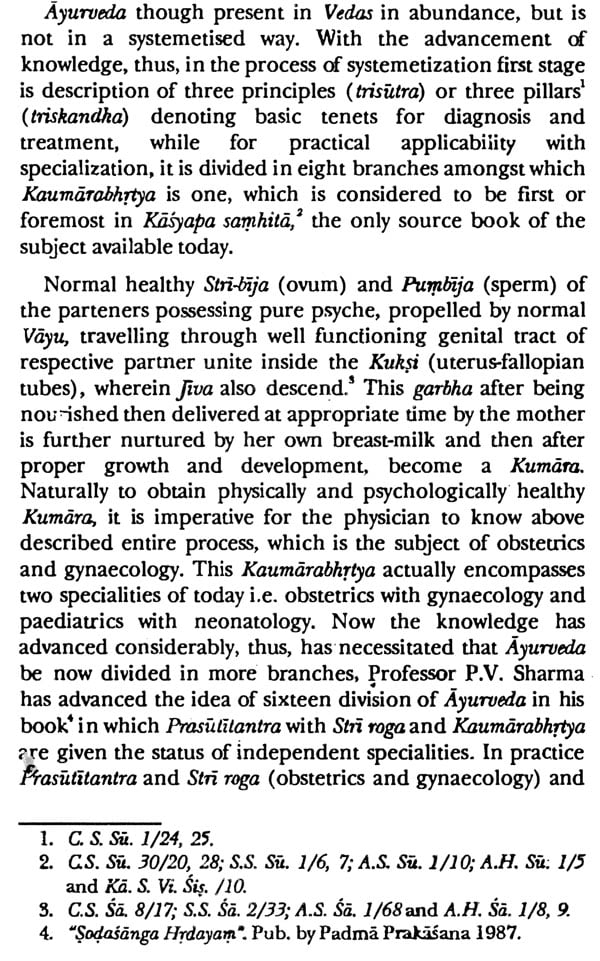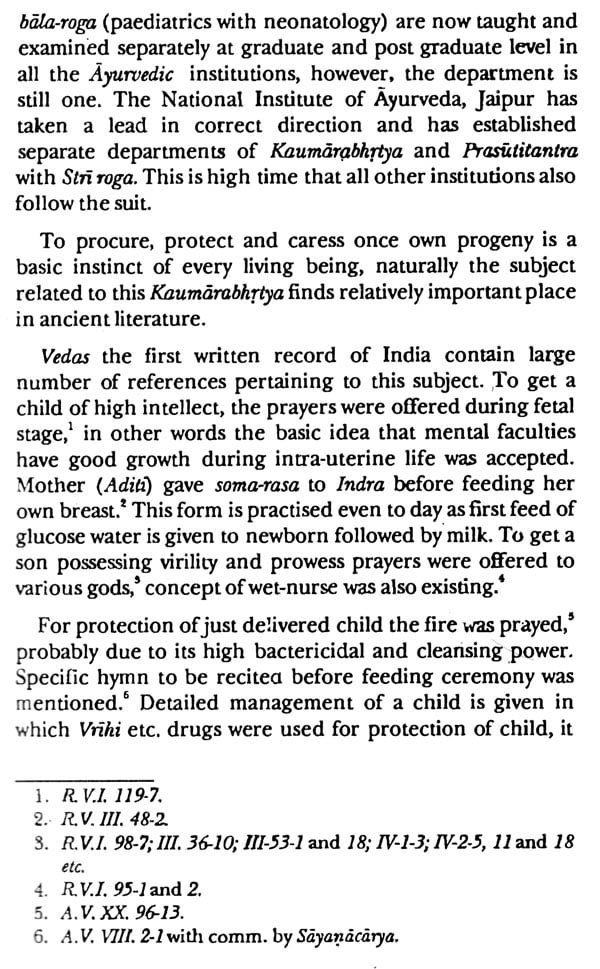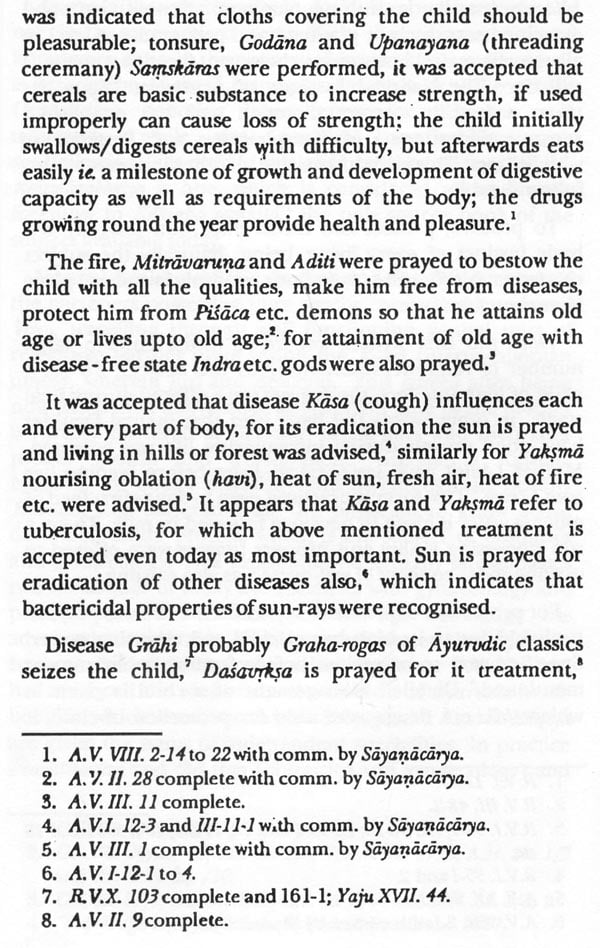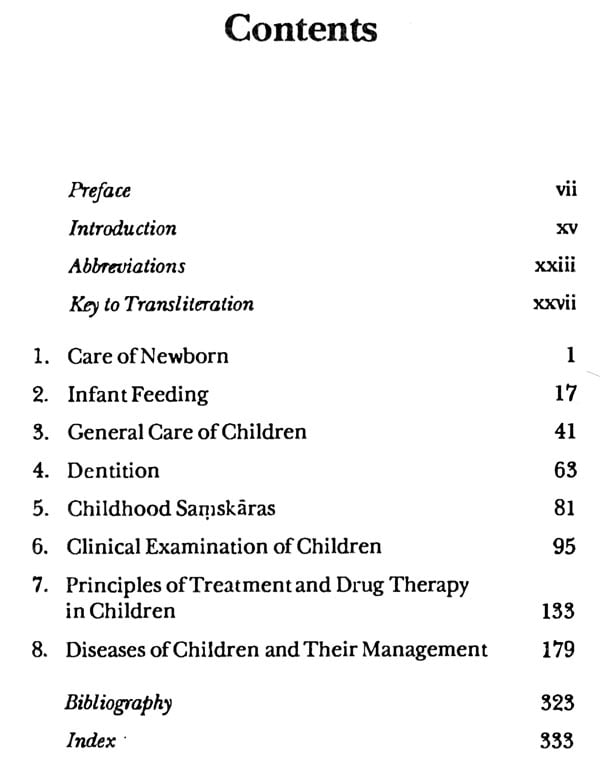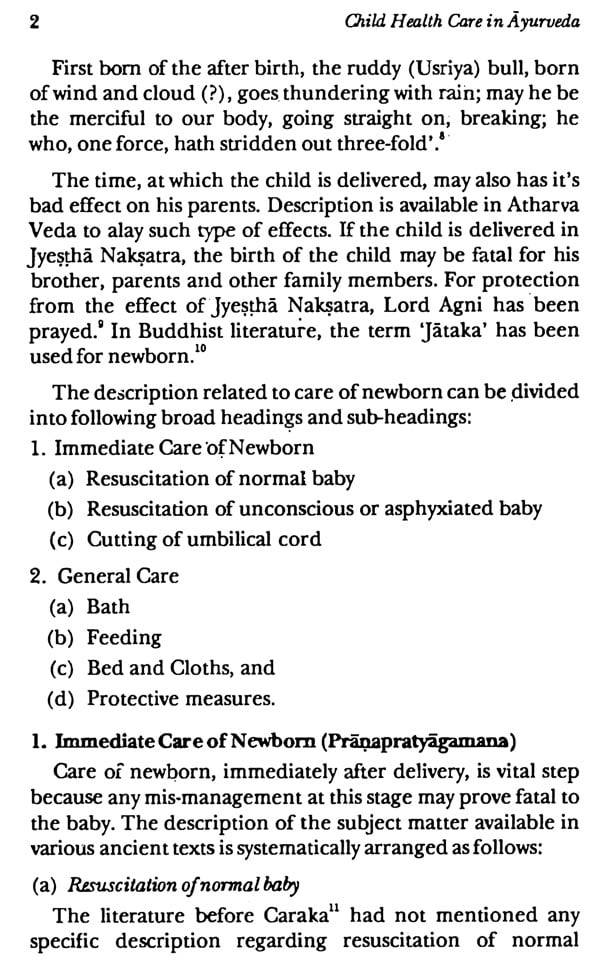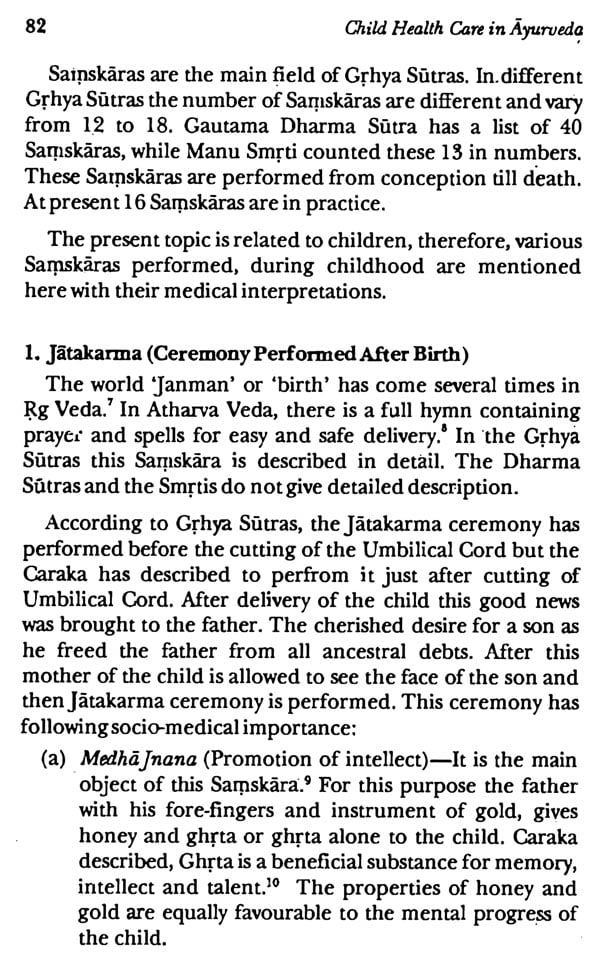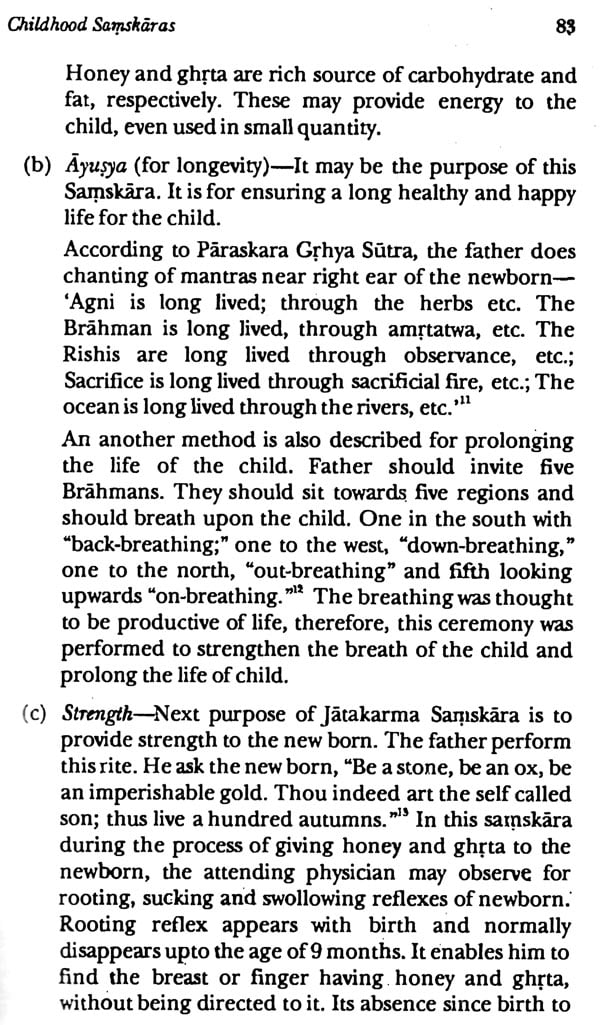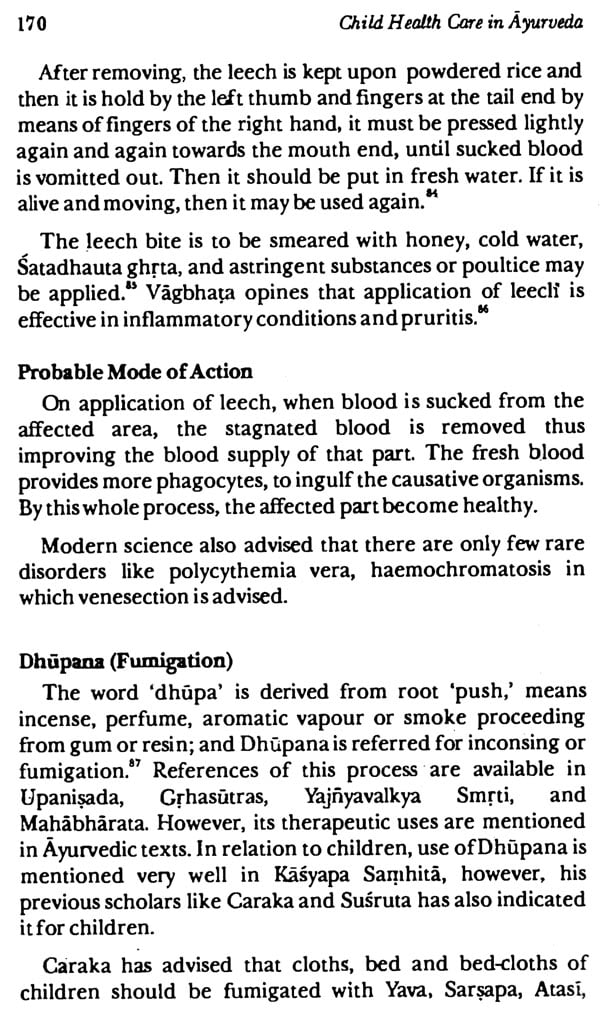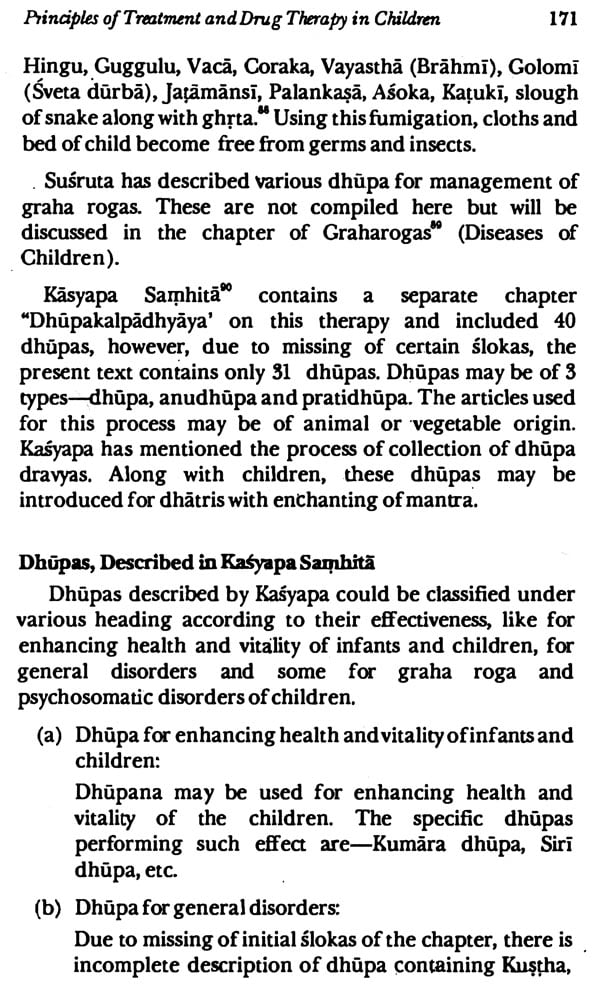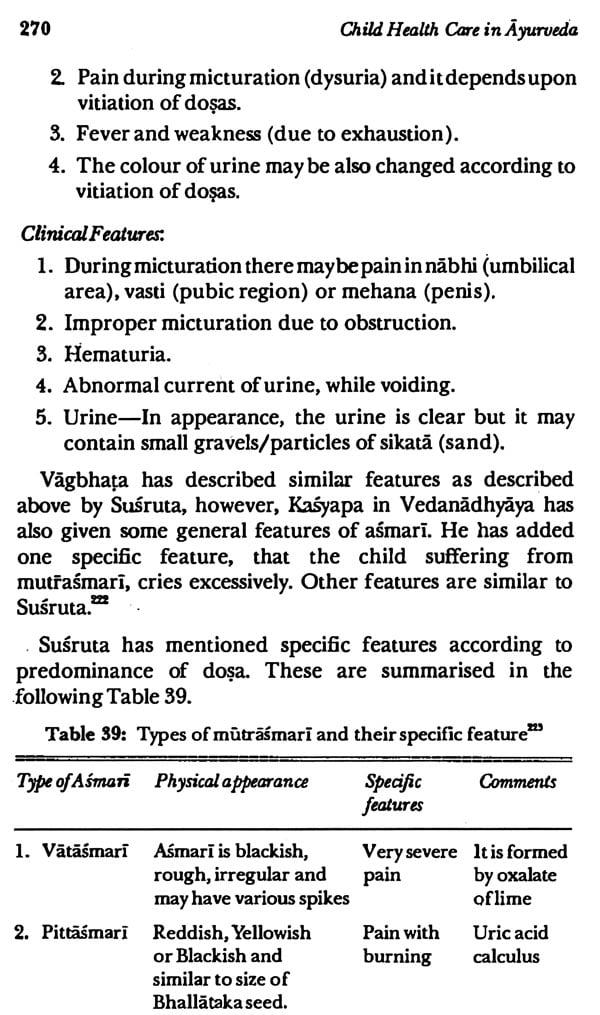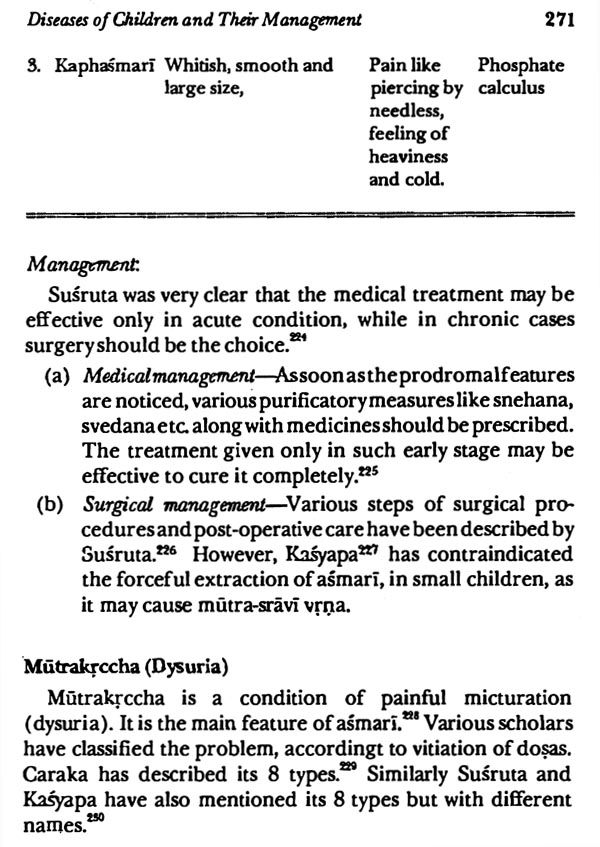
Child Health Care in Ayurveda
Book Specification
| Item Code: | NAU439 |
| Author: | Abhimanyu Kumar |
| Publisher: | Sri Satguru Publications A Division of Indian Books Centre Delhi, India |
| Language: | English |
| Edition: | 1999 |
| ISBN: | 8170303893 |
| Pages: | 338 |
| Cover: | HARDCOVER |
| Other Details | 9.00 X 6.00 inch |
| Weight | 580 gm |
Book Description
The history of medicine is at the same time a very old and a very young field of study. It is not a mear history concerned of only historians, but is equally important for . medical professionals too. Medical history tells us where we came from and where we stand in art of healing at present. Several generations of philologists and historians have made source available to us. Truely speaking, medical history is the compass that guides us into the future and shows the direction in which we are marching. History of medicine practiced by Indians is much interesting than the medical system of any other country. In 1920, Indian archaeologists discovered large cities in the Indus Valley. The chief sites excavated so far are Mohanjodaro and Harappa. Culture of these cities much have florished in the 3000 B.C. It would be matter of great curiosity that what kind of medicine was practiced those days by Indus people. No any kind of text or document we find related to that.
It can be merely an idea that medicine practiced those days must have been similar to that of other peoples of similar period, like of Sumer and Creta. The medicine may be a combination of religions, magical and empirical rites and procedures. Vedas are the source of all science and learning of Indians, after the Aryan invasion, Ancient scholars received knowledge from their ancestors and compiled in the form of four Vedas - .13gveda, Yajurveda, Samveda and Atharuaveda. These are consisted of hymns, prayers, incantations and ritual formulas. Commentaries of Veda were written later on as Brahmans, Aranyakas and Upanisadas. 13gveda and particularly Athaivaveda were concerned with matter of health care. Vedic medicine must have flourished for centuries and Indian medicine, thereafter was named, Ayurveda. Ayurveda is a science that imparts the knowledge concerned to life, the main aim being to provide guidelines .Jr maintenance and promotion of health, as well as prevention and treatment of diseases. In other words, Ayurveda is a science which helps in understanding creative and non-creative aspects of life, happy and un-happy life; congenials and pon-congenials for life; life span and also corporal dimensions. It consists of eight clinical branches, namely - Kiiyacikitsa (General medicine), gaiya (Surgery), Sediikya (Eye and E.N.T.), Agada Tantra (Toxicology), Bhitta Vidya (study related to intervention of supernatural powers), Kaumarabhrtya (Child health care), Rasciyana (Rejuvenative, anabolic and preventive methods), Vcifikarana (methods for achieving energy and sexual pOwer). Kaumarabhrtya (child health care) has been considered as an important speciality of Ayurveda. VariouF terms have been used for this, during ancient period, viz. Kaumcirabhrtyalcam, Kaumarabhrtya, Kaunairatantra, Balacikitsa, Darakatikicchd or Bala Roga. The word W.aurniirabh!tyai is composed of two words - Kuynnin and Bhrtya. The word 'Kumara' was used in Vedas, in the sense of a child, boy, youth, son, etc., while in Sarnskrt literature this word has been specially used for Jar' tikeya, the son of Lord Siva. The children of royal families were also called Kumar.
The word 'Kumetra, being pole of the subject needs further analysis, which is combination of two words - Ku and mara. According to the lexicon of M.M. William, the word 'Ku' is used as a prefix implying deterioration, depreciation or deficiency. The word 'mara' is derived from root 'mil' means easily dying; while in Satriskrt literature the word 'mar' is used as a synonym of the God of love (Kamadeva). In the present context, i.e., in strict medical sense 'Kamadeva' can be correlated with the sex hormones. As described in Sarrislq-t literature, Kamadeva is mainly responsible for sexual activities, including the physical constitution of body. In the same way sex hormones are also responsible for development of sex organs, constitution of body and lastly for sexual activities. It is well accepted fact as per modern medical sciences, that sex organs are not fully developed mature in the childhood period. The discussion clearly shows that childhood is the period during which sex hormones (Kamadeva) are deficient (ku) and sex organs are not fully mature.
Keeping in view these facts, our ancient scholars decided to limit this stage of life (childhood) upto fifteen/sixteen years. Generally a person becomes sexually mature, after this period. These thoughts of ancient scholars resemble with those of the scientists of modern era. Thrtya' word is originally, derived from root ' bhrne bharane' means to bear (in womb), wear, nourish, support and maintain. Raghuvantia of Kaliclasa also supports the meaning of this word, as this is used for care of young child or for care of a woman in pregnancy. Above description clearly shows that the word Kaumarabhrtya' is coined for the subject, which is mainly concerned with the maintenance along with the care of child. Experts of this speciality are known as 7Caunuirabhriya 13hisak' and their nature of work has been considered very tough than experts of other specialities of Ayurveda.
Various scholars of ancient period have described the field of Kaunuirabhrtya in their own way but the broader area covered is more or less the same. Before the period of Caraka, no one has described the field of Kautruirabhrlya clearly. However, Caraka also referred only the name of the subject but not explained the scope of the subject. Cakrapapi, the commentator of Caraka Sainhita, has defined the subject and said that bharana of Kumara is the main area of Kaumarabhrtya.
SuSruta has very vividly explained the subject matter of Kaunuirabhrtya. It includes:
(i) Nursing and healthy upbringing of infants and children.
(ii) Purifying and improvement of breast milk found deficient in quality and quantity.
(iii) Treatment of:
a. diseases due to the use of vitiated breasted milk.
b. diseases peculiar found in infant and childhood period.
c. diseases due to influence of grahas.
**Contents and Sample Pages**
